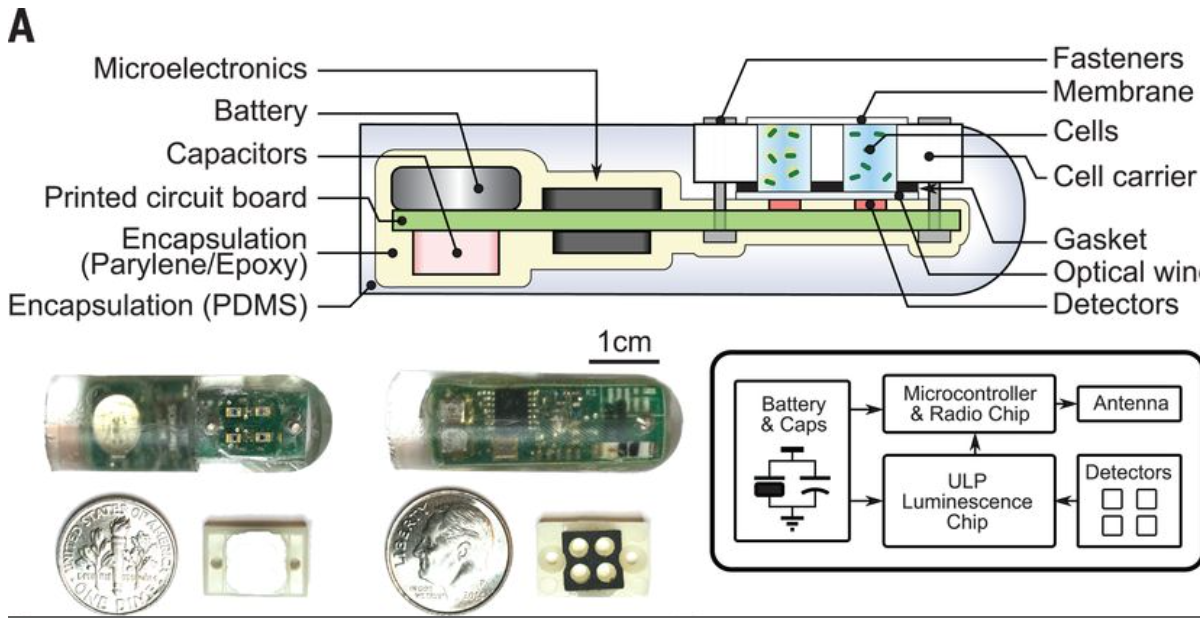MIT’s Timothy Luhas developed an ingestible sensor with embedded genetically engineered bacteria to diagnose bleeding or other gastrointestinal issues.
The “bacteria-on-a-chip” approach combines living cell sensors with ultra-low-power electronics that convert the bacterial response into a signal read by a phone.
The technology has only been tested in pigs, but shows promise in detecting gastrointestinal blood and inflammation. The researchers believe that the sensor will be able to be remain in the digestive tract for days or weeks, sending continuous signals.
Click to view MIT video
